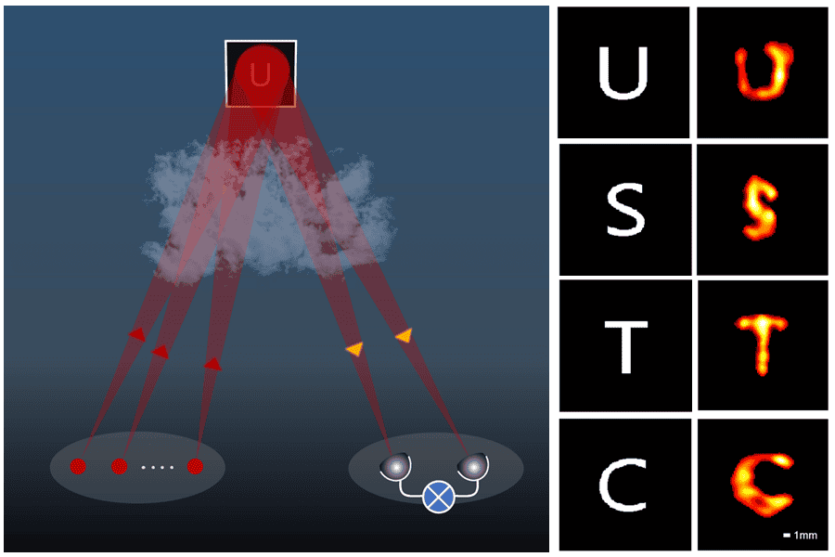
Scientists from the Chinese University of Science and Technology used a laser to read an 8-mm letter on a board mounted on the roof of a house 1.3 km away.
The researchers sent 8 infrared beams at the distant sign. Nearby were 2 telescopes that collected the flashes of light that returned. The letter was reproduced with amazing clarity.
It is noted that Chinese scientists used the method of intense interferometry, which allows us to image distant non-luminous objects with 14 times better resolution than that provided by a single optical telescope. The 8 mm wide letter was detected even through the flickering atmosphere.
Most optical lenses focus on the shape and colors of an object by determining the angle and phase of incoming light. However, these methods are ineffective when there is flicker in the air, the object is too small, or it does not emit light Instead of tracking the direction of photons, the intensity interferometry method observes the intensity of their flicker at different moments in time.
Photons arriving at two locations at the same time can create subtle, synchronized fluctuations. This effect allows researchers to obtain the finest details about a source without taking a conventional image In 1956, astronomers first used this method to measure the size of stars.

As part of the experiment, Chinese researchers glued shiny metal plates with letters on the roof of a remote building. Each of the plates contained a tiny letter, no larger than peas. Scientists have divided 100-milliwatt infrared laser into 8 separate rays. Each of them passed through a slightly different layer of the atmosphere. Two small telescopes collected the scattered light. By adjusting their separation — from 7 to 87 centimeters — and rotating the target 360 degrees, the team could compare intensity variations between the detectors.
The letters appeared with a resolution of 3 mm. Conventional means at this distance would have required very powerful optical instruments. Using only one telescope, the resolution would be 42 mm and the letters would be too blurred so that they can be read.
According to one of the leading researchers Qian Zhang, their the method can find application in astronomy and agriculture. In his opinion, these could be laser interferometry systems mounted on drones or towers that will monitor remote forests or fields. With sufficient resolution, scientists could remotely monitor insect swarms, invasive species, or detect early signs of crop diseases.
France creates laser rifle that melts electronics at a distance of 500 meters
The results of the study were published in the journal Physical Review Letters
Source: ZMEScience

Spelling error report
The following text will be sent to our editors: